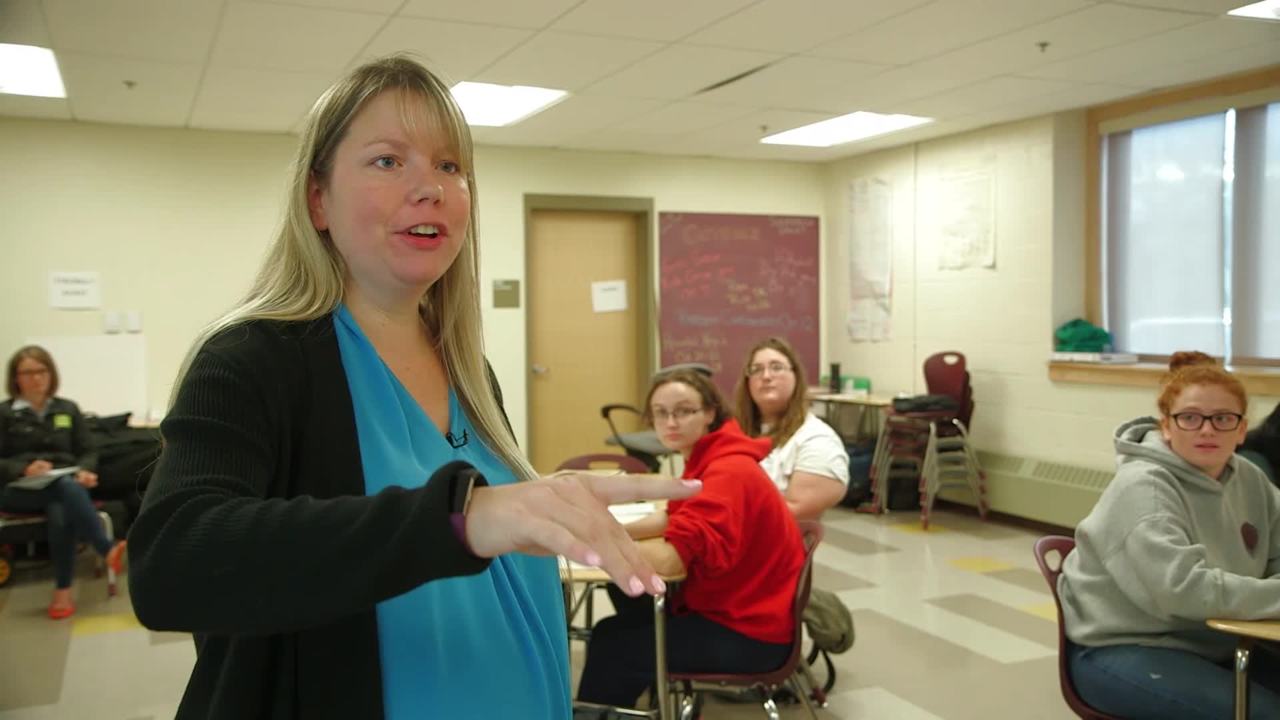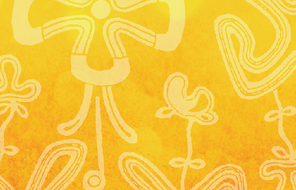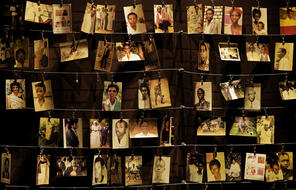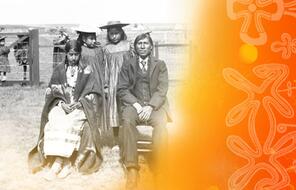Part of this lesson, they're going to be looking at different stories that tell different choices people have made. And they're going to discuss the choices and the stories in the groups. And so I expect some groups will come to a quick consensus with what the role of the person was, whether it was a perpetrator, collaborator, bystander, and what the dilemma was. I expect other groups to struggle with it a little more and maybe fight amongst themselves to come to an agreement. All right. So we are going to look at a couple of stories today and tomorrow that deal with perpetrators, collaborators, bystanders, upstanders, victims, and the dilemma that they all faced. So we've got four readings. "Cries Ringing in My Ears," "Trying to Make a Difference," "Official Policy," and "Taking a Stand." They're all in the book in front of you. So in your groups, you're going to identify and describe the dilemma. What was the choice they had to make? Or why was that decision difficult to make? Why was it a difficult choice for them to make? You're going to identify what the person or the people in the story did and why you think they made the choice and then talk about where their identity falls. Are they a perpetrator? Are they a collaborator? Are they a bystander, an upstander? Or are they a victim? What is the dilemma? What is the dilemma in this story? A bunch of people knew about it. And no one did anything other than this one guy, which got turned down for trying to do something. The dilemma is what's happening to the Armenians. So what is this? Who is this one guy? And what is that thing that he did? Well, it's the German ambassador. I need a little more specific. Metternich. He protested. Yeah. He protested the Turkish treatment with the Armenians. December 1915, he wrote the reich chancellor in Germany that he would get a firmer stance against the way the Armenians were being treated. What he said. So December of 1915, how long after the start of this genocide did he write that letter? That's April 24th. Yeah. How long between the start of the genocide in April of 1915? Oh, it was like eight years. Eight months. Eight months. About eight months. There we go. Eight months after it all started, someone decides to stand up. But it really didn't even do much. He was protesting. He wrote a letter. He didn't really do anything to stop it. Plus, they're in World War I. It's like, eh, got to pick your battles. They're in different groups just so that they can talk about the readings so that they can collaborate with their peers. I found, over the years, that students have a harder time just raising their hand and sharing something in class when it's just themselves. When they can talk about it with classmates and see that two or three or four other people agree with them or have the same opinion, they're more willing to vocalize and share out their thought or the opinion. They got what I was trying to do. They understood the vocab. They understood the readings. And they debated a little bit about the readings, too, which will hopefully continue into tomorrow. The vocab, especially perpetrator-collaborator, collaborator-bystander, there seemed to be a lot of overlap, especially with the second class of the day. So when they were working in their small groups with the one particular reading they had been assigned and they had to determine the people involved-- what were they? What was their role? They ended up disagreeing a lot with that. And I thought that was really interesting to see how they backed up their thoughts on that. At the end of fourth period, when some girls were walking out and they were like, I just don't even know anything anymore. I hear that a lot. They come in. And they're like, well, there's right and there's wrong. And then, after a couple of activities like this one, they're like, well, there's not. There's right. There's wrong. And then there's this third option that's not right. It's not wrong. It's-- I don't know what it is. I don't even know how to express it in words. There are so many questions now. I have so many more questions. Where did their identity fall? So the American was a bystander? I would say the American was a bystander, because it was like-- Well, no. I'd say-- she was a-- They were in the house when their friends were taken. There was Britain, Russia, and the United States would be bystanders, because they all knew what was going on. Yeah. But specifically the person who was telling the story. In this book, the woman from the US-- Is from-- yeah. She was in the house when her friends were taken from their house and said, you have to leave. In a sense, she's an upstander because she did give the money to those people to buy a train ticket rather than having them walk, which is suffering. So if we're looking in technical terms, she can count as an upstander in a sense. Do I think she was? No. But, in her defense, can I say she was? Yes. Yeah, she tried to help them, but-- She couldn't really do much. She was just one-- So speaking from her defense, she was an upstander. Speaking my opinion, she's a bystander who tried to do something. But it just didn't work out. I was a little surprised at who got really involved in this lesson today. In first period, one of the most vocal students was this girl who is pretty quiet typically and doesn't really speak up in class, just occasionally. She's got great thoughts. But she always expresses that in writing in her journals, in her writing assignment homeworks, never really seeming confident enough to share with the class. And she was pretty vocal today. So I was pretty surprised with who was moved most by what we were talking about and who had the strongest opinions and who was willing to raise their hand and share in front of the class. I think they're walking away with more questions than they had to start with, which is pretty typical for a lot of these lessons that we do.










